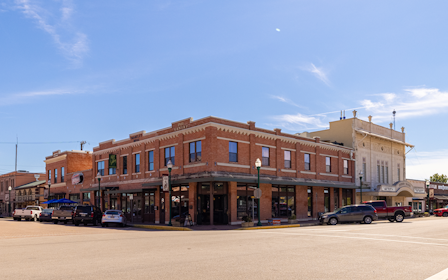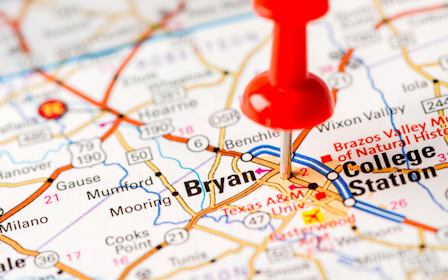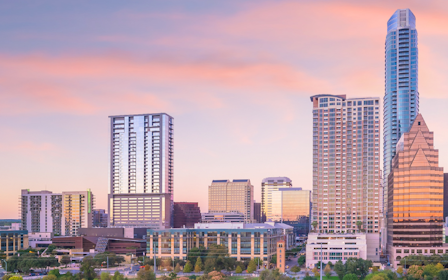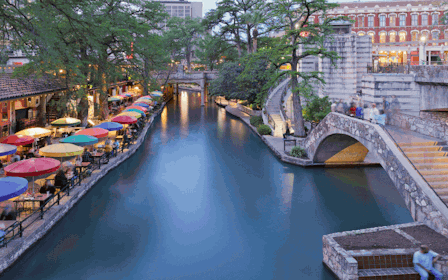Relocating to Texas? Smart move. The Lone Star State is clearly a prime destination for homebuyers today, having led the nation in population growth1 for the last two years. But with a state roughly twice the size of Germany, where exactly do you start your search?
That’s where this guide comes in. Think of it as your atlas to buying a new home in Texas, built to help you navigate the massive housing market, get a feel for the area, and ensure your road trip to homeownership is smooth and flat-tire-free.
Come along on this journey, and join us as we tour major cities, like Dallas, Austin, and San Antonio, and some charming smaller towns. Buckle up, we’re putting this thing in gear and hitting the road to find you the perfect place to call home.
Why Texas Is a Top State for Homebuyers
Before we cross state lines (and snap some pics at the welcome sign), let’s cover exactly why Texas draws the attention of homebuyers nationwide.
More people are moving to Texas than anywhere else in the United States, with most new residents citing a combination of these attributes as the reason that spurred their move:
- Economic opportunity: Texas’s economy isn’t just big. It’s the eighth-largest in the world2 and bigger than some larger countries, such as Russia, Canada, and Italy. In an economy this big, there are career opportunities for everyone. Notable economic sectors in Texas include manufacturing, aerospace and aviation, energy, and technology.
- Affordable real estate: The median home price in Texas3 is approximately $353,700, 23% lower than the national average. Living in a state with such affordable options can allow you to stretch your budget further.
- No state income tax: Texans keep more of their paychecks, significantly increasing their overall take-home pay. Living here could allow you to allocate more cash toward your mortgage, an extra vacation, or other expenses.
- The Texas spirit: Often larger-than-life, Texas culture is famously diverse. It’s a bold blend of independence and Southern hospitality, rooted in cowboy heritage, live music, and a deep love for barbecue. This unique mix is visible in its cuisine, music, art, and laid-back lifestyle.
First Stop: The Dallas-Fort Worth Metroplex
 The first leg of our Lone Star road trip takes us to the heart of North Texas: the Dallas-Fort Worth (DFW) Metroplex. As one of the fastest-growing metropolitan areas in the country, DFW is a popular choice for homebuyers relocating to Dallas, Texas. The area offers a dynamic blend of job opportunities, world-class amenities, and suburban value.
The first leg of our Lone Star road trip takes us to the heart of North Texas: the Dallas-Fort Worth (DFW) Metroplex. As one of the fastest-growing metropolitan areas in the country, DFW is a popular choice for homebuyers relocating to Dallas, Texas. The area offers a dynamic blend of job opportunities, world-class amenities, and suburban value.
Find Your Home in the Dallas-Fort Worth Area
Lifestyle and Economy
The DFW area is a national hub for several Fortune 500 companies and is often referred to as “Silicon Prairie.”
- Overall vibe: The metroplex is generally split: Dallas is known for its upscale urban energy, corporate headquarters, and blossoming arts scene4, while Fort Worth is more laid back, relaxed, and tied to its strong cowboy roots.
- Job market: The economy of DFW is highly diversified and driven by sectors such as technology, financial services, aviation, and healthcare. Employment growth in Dallas and Fort Worth is consistently on par with the national average5, if not outpacing it.
Housing Market
DFW has been a desirable housing market for some time, offering affordability and variety across its many popular suburban locales.
- Affordability: The median home price for the DFW metropolitan area is somewhat tricky to calculate, as home prices vary significantly depending on where you’re looking to buy. Homes closer to the city center are more expensive, with the median price reaching highs of over $400,0006. However, the DFW metroplex is well known for many charming suburbs where prices are significantly more affordable and lower than the national average.
- Attractive suburbs: The most popular suburbs in the Dallas-Fort Worth area7 include Coppell, Forney, Frisco, Plano, Grapevine, Flower Mound, and Southlake. While each area has its own personality, all offer the conveniences of a larger city without the price tag.
Recreation
The DFW area supports a vibrant cultural scene that includes premier sports teams, robust arts districts, and surprisingly vast outdoor spaces (at least for a major city).
- Professional sports: Many professional athletic teams call the DFW area home, including the NFL’s Cowboys, the NBA’s Mavericks, the NHL’s Stars, and the MLB’s Texas Rangers.
- Arts and culture: The Dallas Arts District spans 118 acres and over 20 square blocks. The area features multiple performing arts centers and award-winning museums, including the Perot Museum of Nature and Science, the Margot and Bill Winspear Opera House, and the Dee and Charles Wyly Theatre. Fort Worth is also known for its historic stockyards, which host events year-round.
- Outdoor spaces: DFW has many popular parks, including Klyde Warren Park, the Cedar Ridge Nature Preserve, and the Dallas Arboretum and Botanical Garden. There are also a number of walking trails, disc golf courses, and other outdoor recreation spots.
Explore new construction homes in Dallas-Fort Worth.
Next Stop: Houston Metro
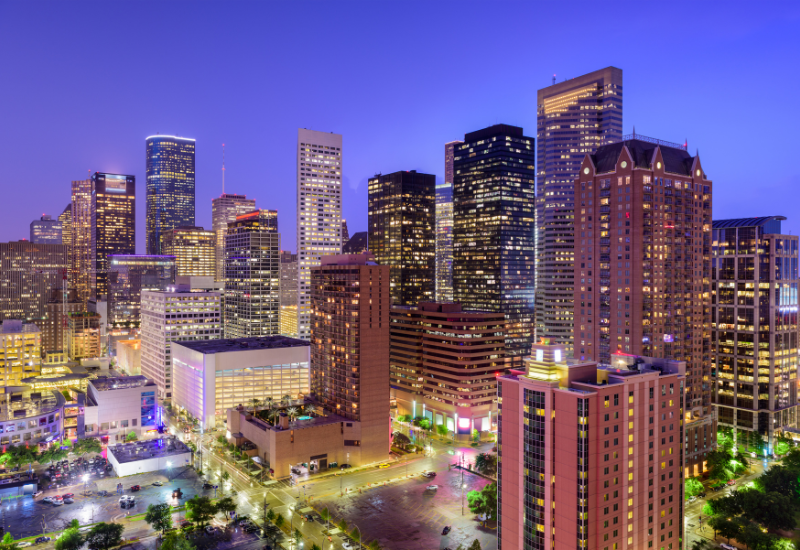 Heading 230 miles south from Dallas, the next stop on our Texas road trip takes us to the state’s most populous city: Houston. The Houston Metro area is home to nearly eight million residents8 and continues to be a popular destination for newcomers moving to Texas.
Heading 230 miles south from Dallas, the next stop on our Texas road trip takes us to the state’s most populous city: Houston. The Houston Metro area is home to nearly eight million residents8 and continues to be a popular destination for newcomers moving to Texas.
Find Your Home in the Houston Area
Lifestyle and Economy
Houston is a major player in the oil, natural gas, and clean energy industries and is widely known as the “energy capital of the world.”
- Overall vibe: Houston is one of the most racially and ethnically diverse cities in the United States. This diversity contributes to a rich cultural scene, including many celebrated restaurants offering international cuisines, and a thriving museum and theater district.
- Job market: The Houston Metro is a global economic powerhouse and leader in innovation across several notable industries, including space exploration, energy, and medicine. The area is home to NASA’s Johnson Space Center and the largest medical complex in the world: Texas Medical Center.
Housing Market
Like DFW, the Houston Metro area has long been noted for its relative affordability and variety of housing options. Within the area, you can find historic inner-city neighborhoods and sprawling planned suburban communities.
- Affordability: Compared to other major US cities, Houston’s housing costs9 are historically among the lowest, frequently even ranking significantly below the national average10. Homes in Houston closer to the central business district or affluent inner-loop neighborhoods (River Oaks11 or West University12) will be more expensive. At the same time, the broader metro provides many favorable options in the surrounding suburbs.
- Attractive suburbs: The Greater Houston metroplex has several high-quality, planned suburbs. Towns like The Woodlands, Sugar Land, Katy, and Bay City are prized for their excellent school systems and amenities.
Recreation
- Space and spectacle: Houston is the epicenter of spaceflight in the US. Space Center Houston allows visitors to get up close and personal with iconic NASA sites and facilities like Mission Control and even the colossal Saturn V Rocket. Houston is also home to several professional sports teams (sports are a way of life in Texas), including the NFL’s Texans, the MLB’s Astros, and the NBA’s Rockets.
- Museum and theater districts: Houston is an art lover’s paradise, boasting not one, but two centralized districts. Houston’s museum district is home to 19 world-class institutions, including the Museum of Fine Arts and the Houston Museum of Natural Science. The Theater District features a concentration of performing arts centers that few cities in the country can rival.
- The foodie capital of Texas: Thanks to the area’s status as one of the most diverse in the world, its culinary landscape is a playground for food lovers. This smorgasbord includes multiple award-winning chefs and authentic cuisine from across the globe.
Third Stop: Austin Metro
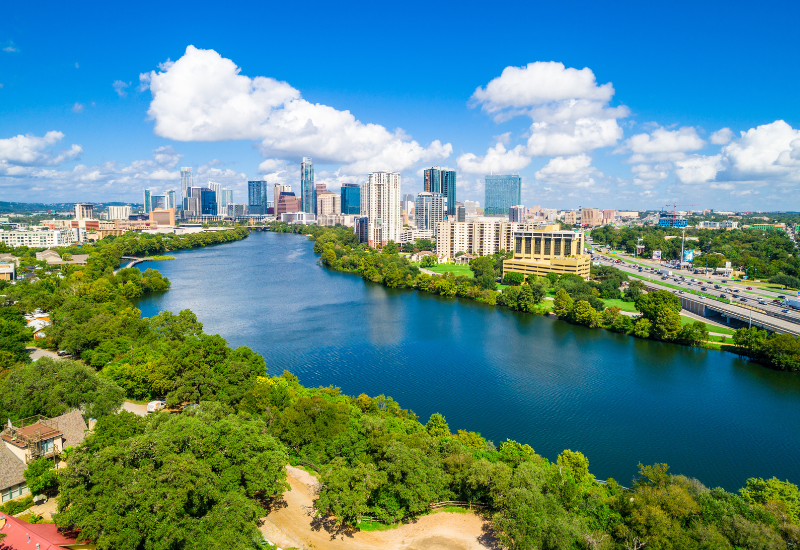 Leaving northwest from Houston, it’s a short two-hour drive down I-10 to our next stop: the Live Music Capital of the World. The Austin Metro area has been the fastest-growing metropolitan area in the United States13 for some time now, growing by 5.1% in 2024 alone. While still smaller than Dallas and Houston, the area is now home to approximately two and a half million residents14.
Leaving northwest from Houston, it’s a short two-hour drive down I-10 to our next stop: the Live Music Capital of the World. The Austin Metro area has been the fastest-growing metropolitan area in the United States13 for some time now, growing by 5.1% in 2024 alone. While still smaller than Dallas and Houston, the area is now home to approximately two and a half million residents14.
Find Your Home in the Austin Area
Lifestyle and Economy
The Austin economy is fueled by a concentration of major technology companies, a sprawling web of startups, its status as the state capital, and the injection of youth and innovation it receives from the University of Texas.
- Overall vibe: Austin’s unofficial motto is “Keep Austin Weird,” and nothing else seems to capture the area’s eclectic, creative, and laid-back atmosphere quite as well. The city was named the Live Music Capital of the World in 199115 and continues to support the highest volume of music venues per capita.
- Job market: Global technology giants like Apple, Tesla, Samsung, and Dell continue to have a significant presence in the Austin metropolitan area, employing thousands of tech workers and contributing to the city's continued economic growth.
Housing Market
Due to Austin’s rapid growth, the housing market within city limits has become significantly more competitive and expensive than other major Texas cities. However, the Greater Austin area still offers a variety of neighborhoods that appeal to commuting professionals and households looking for an exciting way of life without the expense of the city center.
- Affordability: Housing prices in Austin have soared to over $500,000 in recent years16, but if you widen your search radius, you’ll still find plenty of value in nearby areas such as Cedar Park, Pflugerville, Round Rock, and Georgetown.
- Attractive suburbs: Homes in Round Rock, Pflugerville, and Georgetown are significantly more affordable and offer residents an appealing mix of good school districts, convenient amenities, and easy access to the city.
Recreation
From the famous Texas Hill Country to the heart of downtown, the Austin area provides ample opportunities for residents to get outside and enjoy the place they call home.
- The Live Music Capital of the World: Music is Austin’s identity in many ways. Not only does the area host notable music festivals, such as South by Southwest (SXSW) and Austin City Limits (ACL), but you can also enjoy hundreds of live music venues on any given night.
- Outdoor lifestyle: The Austin metro encourages an active lifestyle, with many destinations, such as Zilker Park, Barton Springs, and Lady Bird Lake, offering residents the chance to capitalize on the area’s natural splendor. Just search “things to do in Austin,” online, and you’ll be transported to a packed list of recreational opportunities.
- Texas barbecue: While Houston gets most of the culinary attention, Austin is a celebrated hotspot in its own right, globally renowned for its BBQ and Tex-Mex scene.
Explore new construction homes in Austin.
Final Stop: San Antonio
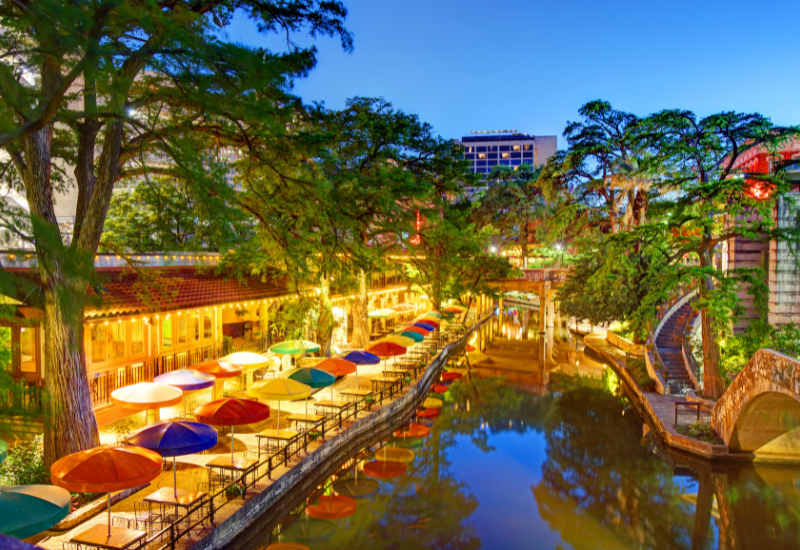 A quick drive south from Austin brings us to Alamo City, a place where deep history and historic landmarks meet a dynamic, modern economy. The San Antonio Metro is slightly larger than Austin and is home to just over two and a half million residents17, with more moving to San Antonio every year.
A quick drive south from Austin brings us to Alamo City, a place where deep history and historic landmarks meet a dynamic, modern economy. The San Antonio Metro is slightly larger than Austin and is home to just over two and a half million residents17, with more moving to San Antonio every year.
Find Your Home in the San Antonio Area
Lifestyle and Economy
Compared to its other Texas counterparts, San Antonio's economy is less focused on large sectors, and heavily influenced by military and tourism hubs.
- Overall vibe: San Antonio uniquely blends historic charm, cultural roots, and Texas tradition. The city is defined globally by the Alamo and its winding River Walk (Paseo del Rio), which reflect a local lifestyle more focused on tradition and culture than the rapid-fire expansion you might find in Austin or Dallas.
- Job market: San Antonio's core industries are military and defense (anchored by Joint Base San Antonio), tourism, healthcare, and a growing cybersecurity hub.
Housing Market
San Antonio is consistently ranked as one of the most affordable big cities in the Lone Star State, offering significantly more value to Texas homebuyers than Austin or Dallas proper.
- Affordability: Housing prices in San Antonio are affordable overall, with the median home price fluctuating around $250,00018. This lower entry point makes San Antonio an attractive option for households moving from out of state.
- Attractive suburbs: The leading suburb near San Antonio is New Braunfels19, which offers upscale amenities, well-rated school districts, and a reasonable commute. Other affordable and attractive suburbs in the area include Seguin20 and San Marcos.
Recreation
San Antonio offers a very walkable city center near many exciting attractions.
- Historic and cultural highlights: Beyond the historic Alamo and San Antonio Missions Historical Park, the city continues to breathe new life into its traditions by hosting Fiesta San Antonio, a multi-day cultural celebration, every year.
- The River Walk: San Antonio’s undisputed centerpiece, the River Walk is a network of restaurant, shop, and hotel-lined walkways located on the banks of the San Antonio River. Visitors can take a leisurely stroll, stop in to grab world-class Tex-Mex, or experience life on the water via one of many river barge tours.
- Theme parks: San Antonio is home to world-class theme parks, such as Six Flags Fiesta Texas and SeaWorld, reinforcing the area’s reputation for tourism.
Explore new construction homes in San Antonio.
Bonus Detour: Emerging Texas Gems
Before we finish our Texas road trip (and take our last stop at Buc-ee’s before we head home), let’s take a quick detour to explore three emerging communities in more detail.
- College Station: Located about halfway between Houston and Austin, this fast-growing Texas town is built around Texas A&M University and its traditions. Boasting a vibrant atmosphere, strong economy, and diverse community, College Station is a highly-rated locale for career growth and first-time homebuyers. New homes in College Station typically go for just over $300,00021.
- Georgetown: This north-Austin suburb combines historic homes with newer amenities and a beautiful Victorian-era downtown square. Due to its quality of life, booming job market, and affordability, Georgetown is becoming increasingly popular among young professionals and other new Texas residents. The median home price in Georgetown is $430,74522, significantly more affordable than Austin proper.
- New Braunfels: A lively Hill Country gem, New Braunfels is celebrated for its deep German heritage and prime access to Austin and San Antonio. An emerging real estate market, homes in New Braunfels sell for around $350,00023.
Start Your Texas Home Search with Century Communities
Now that you’ve visited some of Texas’s most popular destinations, you’re probably ready to trade the road map for a house key. Century Communities offers new homes in many desirable areas across the Lone Star State, including near Dallas, Houston, Austin, and San Antonio.
Our Find Your Home feature makes locating new construction homes easy. Just type in your perfect area and start exploring modern housing communities around Texas today.
Buying a Home in Texas FAQ
How to buy a house in Texas for the first time?
First-time homebuyers in Texas should begin by securing pre-approval for a mortgage to define their budget. Next, hire a local Texas real estate agent who understands the Texas market and contract process, including how to navigate inspections. After finding a home and negotiating the contract, you will finalize financing, conduct a final walkthrough, and officially close the deal.
What is the best place to buy a house in Texas?
The best cities will depend on your priorities, but several areas offer high home value. Austin and its suburbs (like Georgetown) attract tech and culture. The Dallas-Fort Worth metroplex offers diverse job growth and suburban living. For affordability and access to water recreation, emerging cities like New Braunfels and College Station are top contenders, providing a high quality of life with lower costs than major metros.
What are the advantages of living in Texas?
The primary advantages of living in Texas include no state income tax, which translates to higher take-home pay. The state boasts a strong, diverse job market across energy, tech, and aerospace sectors. Homebuyers benefit from a generally lower cost of living and more affordable housing prices compared to coastal states. Residents also enjoy an abundance of outdoor recreation and vibrant cultural hubs.
Why are so many people moving to Texas?
People are moving to Texas primarily for economic opportunity and affordability. The absence of state income tax is a huge draw for professionals and retirees alike. Texas's robust economy is creating high-paying jobs, and its lower median housing prices still offer significantly more home for the money than markets in California or New York. The business-friendly climate also fuels rapid population growth.

